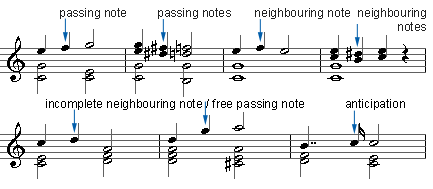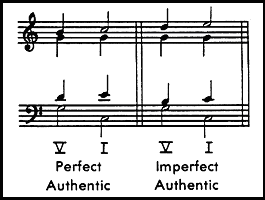MUSIC THEORY - the tonic and dominant
The biggest amount of time is put in the interest of the notes and the amount of focus. The dissonance or consonance of the notes are also playing a big part. Notes that do not belong by a chord are called; nonchord-tones. There are upper and lower neighbour tones and the double neighbour tone; which is a combination of the upper and lower. Sometimes neighbour tones are called auxiliary tones. An incomplete neighbour or escape tone is a changing note that does not return, but jumps up or down even more.

Melodic fluency is the underlying supporting pattern for decorating the music. The filling of a musical hole is called Gaf fill and the pattern of the harmony is good continuation. When all the notes of a chord appear after each other, you’ll call it an Arpeggiation.
tonic and dominant
The dominant is the fifth note of a scale. It has tendency tones that are willing to resolve into the 1, namely the 7 and 2. For example when playing a C-scale, the dominant is G-B-D.

With the dominant and tonic you are able to create two cadences; the authentic and half cadence. The half cadence ends on the dominant and the authentic on the tonic. The authentic cadence has more power because of the outer voices; in the perfect authentic cadence the soprano ends on an 1 or 8; in the imperfect authentic cadence the soprano ends on a 5 or 3.
There is also a contrapuntal cadence; 7 to 8 or 2 to 1, but it is weaker than 5/1.

By changing chords try to move the smallest possible intervals.
- never abandon the keynote and 3 when creating a 4-vocal movement.
- most of the times the keynote is doubled
- never double the leading tone/7
- keep the soprano & alt and tenor & alt in one octave in terms of distance. You’ll call it close position when they lay against each other and open position when there is space between the notes.
- keeping notes the same, is always a good idea.
The dominant creates movement and the tonic creates tranquility
- write complete chords, doublings are possible at the same degree
- There is a prohibition for parallel fifths and octaves.
- the leading tone in soprano has to be solved by steps
- the bass is the fundament
Yours Sincerely @inMusicalTerms
Also: check out my last article about writing harmonies: https://steemit.com/music/@inmusicalterms/music-theory-writing-harmonies
with the help of The Complete Musician: An Integrated Approach to Tonal Theory, Analysis, and Listening, 3rd Edition - Steven G. Laitz
pic. 1; [ http://www2.siba .fi/muste1/images/2_5_hajasavelet1_en.gif]
pic. 2; [http://danielnoble75.w eebly.com/uploads/2/3/5/5/23558538/5830985_orig.png]
pic. 3; [http://www.waybuilder. net/sweethaven/Humanities/Music/TraditionalHarmony/pics/fig2_37.gif]
Simple and well written, thank you.
:) thanks!